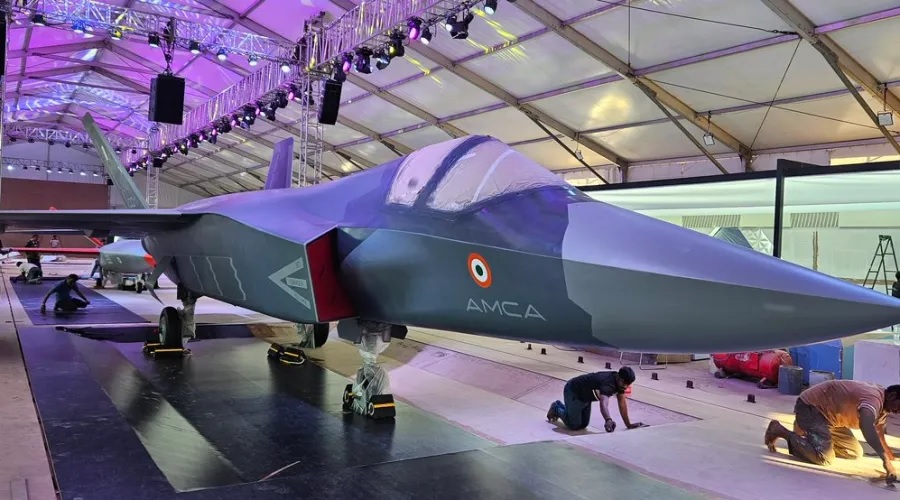India's AMCA Fighter Jet Prototypes to Cost ₹1,000 Crore Each, with Significant Reductions Expected in Serial Production

India is making significant strides in advancing its indigenous defense capabilities with the development of the Advanced Medium Combat Aircraft (AMCA), the nation's first fifth-generation stealth fighter jet. Designed by Hindustan Aeronautics Limited (HAL), the AMCA is poised to elevate the Indian Air Force's (IAF) operational prowess.
Prototype Development and Costs
At the recent Aero India 2025, a senior HAL official disclosed that each AMCA prototype is projected to cost approximately ₹1,000 crore (around $115 million). This substantial investment is primarily due to the integration of cutting-edge technologies and the rigorous testing required for such an advanced aircraft. HAL plans to develop five prototypes to undergo comprehensive flight trials and weapons testing. The rollout of the first prototype is anticipated by the end of 2027, with its maiden flight slated for 2028.
Design and Technological Features
The AMCA is envisioned as a twin-engine, stealth, supersonic multirole fighter jet. Its design includes shoulder-mounted diamond-shaped trapezoidal wings and a V-tail configuration, optimized for reduced radar cross-section and enhanced aerodynamic performance. The aircraft will feature "S-shaped" air intakes to conceal engine components from radar detection, an internal weapons bay to maintain stealth profiles, and extensive use of composite materials to reduce weight and increase durability. Advanced avionics, sensor fusion, and AI-driven combat capabilities are integral to the AMCA's design, ensuring it meets the evolving demands of modern aerial warfare.
Future Production and Cost Efficiency
While the initial prototypes come with a high price tag, economies of scale and refined manufacturing processes are expected to significantly reduce costs in serial production. Projections indicate that once the AMCA enters mass production, the per-unit cost could drop below $100 million. This reduction would position the AMCA as one of the most cost-effective fifth-generation fighter jets globally, making it a competitive asset in the international defense market.
Strategic Significance
The AMCA program is a cornerstone of India's push towards self-reliance in defense manufacturing. By developing indigenous technologies, India aims to reduce dependence on foreign suppliers and bolster its defense infrastructure. The AMCA is not merely a technological endeavor; it symbolizes India's commitment to securing its airspace with homegrown solutions and showcases the nation's growing expertise in aerospace engineering.
In summary, the AMCA project represents a significant leap forward for India's defense capabilities. With substantial investments in prototype development and a clear roadmap for cost-effective mass production, the AMCA is set to become a pivotal asset for the IAF, embodying the nation's dedication to innovation and self-sufficiency in defense technology.



